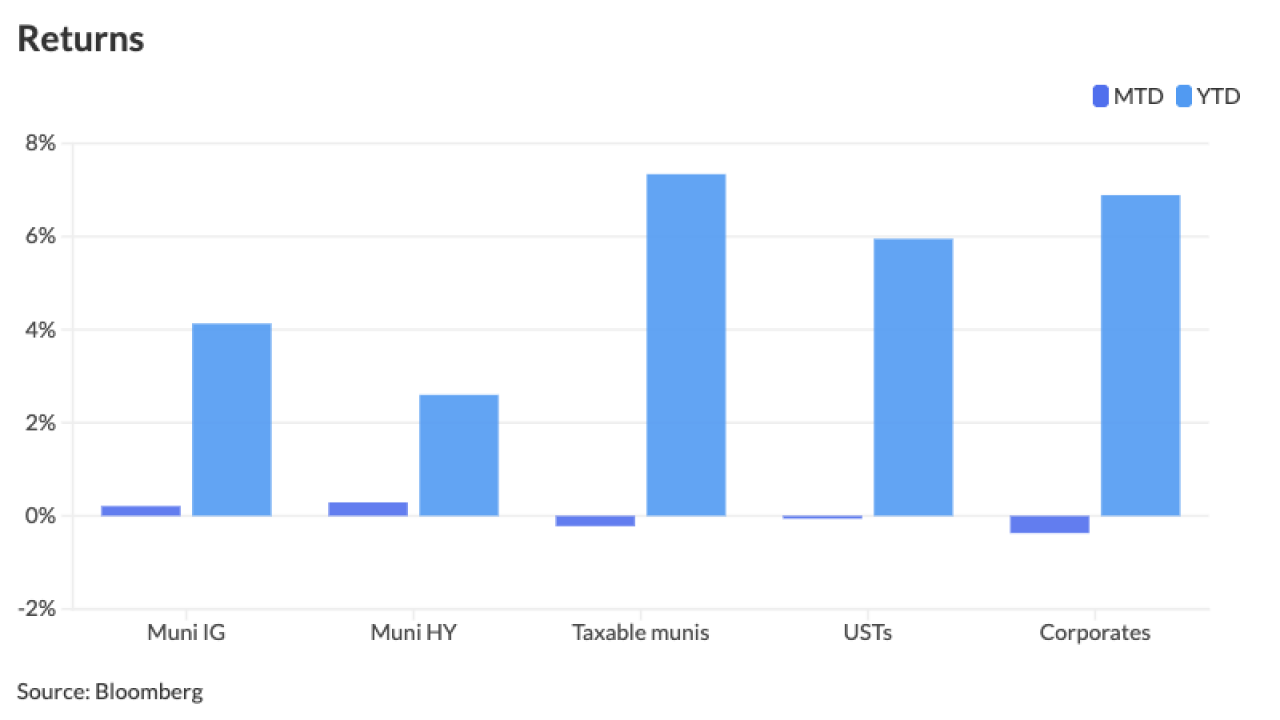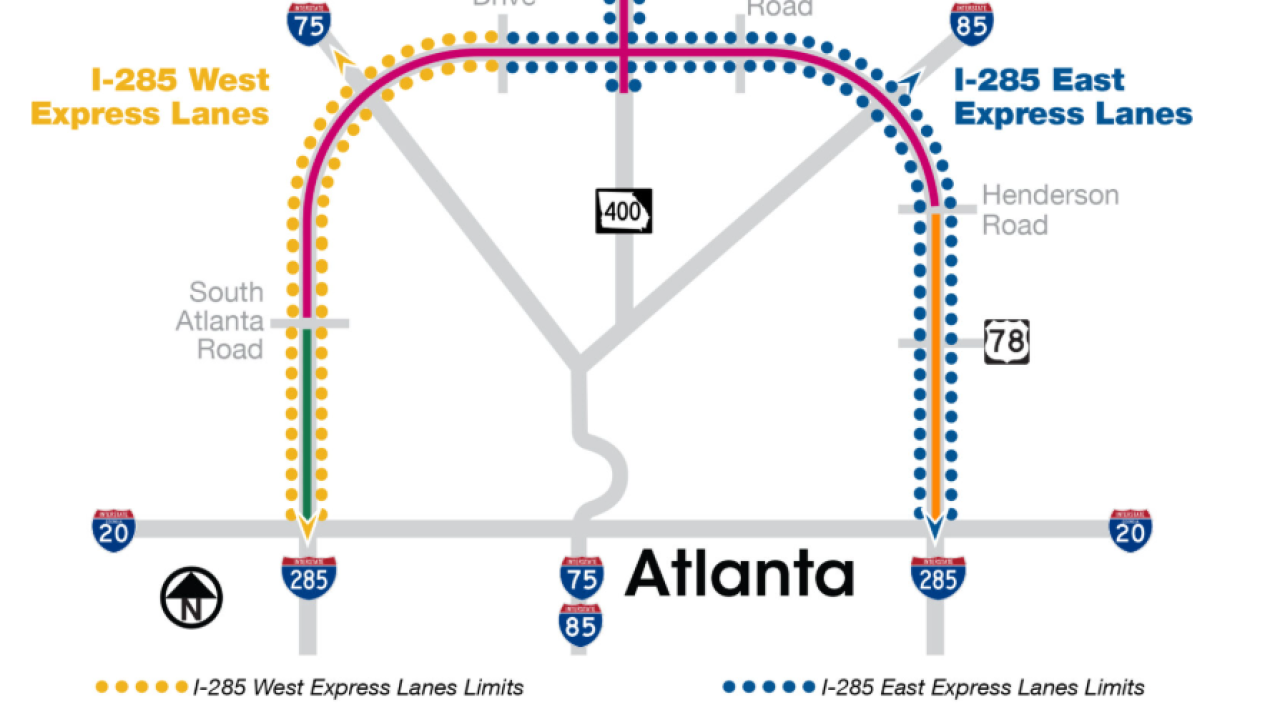
DALLAS — Just seven weeks after voters approved a record $515 million bond package, the San Antonio Independent School District is ready to price the first $150 million Tuesday.
“We have immediate cash needs for the projects covered by our bonds,” said Steve Bassett, chief financial officer of the district. “The voters gave us nearly 67% of their votes in favor of the bonds, and they want to see ground broken and these projects started.”
The deal is expected to include $11 million of tax-exempt Series A general obligation bonds and $139 million of taxable Build America Bonds, but that could change.
“It should be somewhere between $120 million and $150 million,” Bassett said.
The underwriting team is led by Cabrera Capital Markets. Loop Capital Markets, First Southwest Co., Frost Bank, and Morgan Keegan & Co. are co-managers.
The district used a blind bidding process in selecting a pool of underwriters to avoid any suggestions of political favoritism, said Treasurer Lisa Pepi.
“Anyone who was in that pool would have earned it,” Pepi said. “It was a very hard [request for proposals]. They know our credit.”
The district used Sterne Agee as financial adviser and Escamilla, Poneck & Cruz as bond counsel. Fulbright & Jaworski and Shelton & Valadez are underwriters’ co-counsel.
The bond proposal called for renovations at 22 district schools and for other schools to receive new and upgraded playgrounds, technology, security, and facilities for career and vocational education. The district’s Alamo Stadium and Convocation Center would get $35 million of renovations.
After today’s inaugural issue, the district does not expect to issue more bonds from the authorization until 2012, Bassett said. A refunding deal is likely in 2011, however.
This week’s issue includes the district’s first BABs, and possibly its last, if Congress does not vote to extend the program into next year. Uncertainty about the program’s future has brought a flood of BABs to the market in what may be the last opportunity for issuers to use the taxable debt, which carries federal subsidies. Heavy issuance has driven yields to rise in recent weeks.
“We want to get deals done to take advantage of BABs and to get projects underway as soon as possible,” Bassett said. “I’m concerned about the volume, but one thing that sets us apart is our triple-A credit.”
The district carries triple-A ratings through the Permanent School Fund bond guarantee programs for qualifying Texas school districts. But the San Antonio ISD’s underlying ratings are strong, as well.
Standard & Poor’s assigns a AA-minus issuer rating, Fitch Ratings a AA, and Moody’s Investors Service a Aa2. Fitch revised its outlook to stable from negative.
“The outlook revision to stable from negative reflects the district’s stabilized financial position, enabled by management’s efforts to right-size its operations as its enrollment base continues to contract,” wrote analyst Jose Acosta.
Moody’s and Standard & Poor’s maintain stable outlooks.
Moody’s analyst Adebola Kushimo cited the district’s “trend of favorable financial management amidst declining enrollment, following a structural imbalance in fiscal year 2006.”
“The rating also reflects the district’s sizable tax base, low wealth indicators, and a moderate debt burden, when considering the effect of state aid,” Kushimo added.
The triple-A ratings and GO pledge should prove attractive to investors sifting through the flurry of paper coming at the end of the year, said Jeffrey Timlin, portfolio manager and principal at Sage Advisory Services in Austin.
“There’s some pretty good interest in this issue,” Timlin said, noting tightening spreads despite the headline risk of late. Timlin said Monday that the BABs would see spreads over Treasuries of 30 basis points on the short end and 190 on the long end.
Investors may be wary of buying BABs if they believe the program is not going to exist in 2011, Timlin said, even though the federal subsidies for the existing bonds will continue.
“If BABs do not exist anymore, it’s going to be a dead market, and people are going to be sitting on paper that’s increasingly illiquid,” he said.
In the secondary market, BABs will become harder to price as they begin to disappear, Timlin said.
“If it’s a thinly traded market, how do you know what the valuations are?”
Among new issues, however, the San Antonio ISD appeals to investors because of the relatively stable Texas housing market and economy, Timlin said.
“In Texas, we haven’t had the precipitous decline in property values that you’ve seen in other states such as California, Florida and Nevada,” he said. “San Antonio is still a pretty vibrant area, so you’re looking at a pretty good credit.”
While the tax-exempt bonds feature short maturities terminating in 2016, the BABs extend 30 years. Serial maturities for the BABs begin in 2017.
The November bond package will fund the first phase of the district’s 10-to-12-year facilities plan, officials said. Total facility needs are estimated at $1.2 billion. The initial phase will allow the district to consolidate five campuses within three years, generating an estimated $10 million in annual operating costs. The long-term plan, which will need additional voter authorization, calls for the consolidation of a total of 14 campuses.
“Adjusted for 30% state support for debt service, the district’s overall debt burden is moderate on a per capita basis at $3,085 but high as a percentage of market value at 7.2%,” Fitch’s Acosta noted.
The San Antonio ISD has an estimated population of 321,367 and covers about 79 square miles in San Antonio. It ranks 13th in enrollment in Texas with 52,149 students, which is down 3% from 2009. The district showed modest growth between 2008 and last year.
However, enrollment has fallen by an estimated 5% since fiscal 2005, which district officials attributed to residents leaving the inner city for other districts. In response, the district launched a long-term restructuring plan three years ago to improve the programs offered and to find new uses for many of the existing school facilities.
Through consolidating five of the district’s 91 schools, the district aims to compete with nearby charter schools and private schools by offering unique classroom settings and a variety of higher-education preparation programs. The district has been able to adopt the changes without laying off staff, officials said.
Like other districts in Texas, the San Antonio ISD expects severe pressure on the operating side from funding cuts in 2011. Despite its comparatively healthy economy, Texas is facing a budget shortfall of as much as $25 billion, or nearly a quarter of its annual spending, according to some estimates.
School districts, which have struggled to keep teachers on their payrolls since the Legislature provided property tax relief in 2009, expect more severe pain next year.
“We are preparing for a budget cut of 5% to 10%,” Bassett said. “It would be folly to prepare for anything less.”





